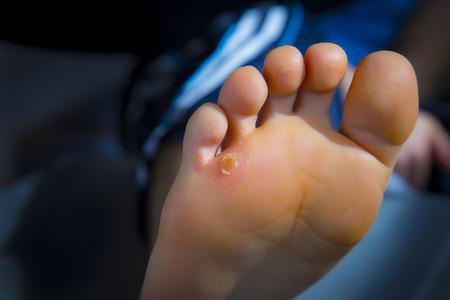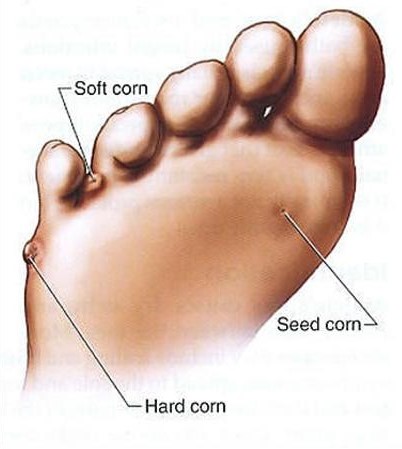Share Post
Where do corns on feet come from?
The development of foot corns is a result of pressure or friction, leading to thickened and hardened skin in certain areas of the feet. Multiple factors can contribute to their formation.
Here’s an explanation of where foot corns come from:
- Pressure points – Foot corns typically arise in regions of the feet that experience heightened pressure or friction. This may be attributed to poorly fitting shoes, such as those that are excessively tight or narrow or possess elevated heels. The continuous rubbing and force applied to specific parts of the feet lead to the thickening of the skin and the development of corns.
- Toe deformities
- Abnormal foot mechanics
- Excessive friction or rubbing
- Lack of cushioning or padding
Foot corns can cause thickened and hardened skin, localized pain or discomfort, and occasionally a raised or waxy appearance as symptoms. Properly fitting shoes with enough toe room and cushioning, as well as avoiding tight footwear and using protective padding, can prevent foot corns. Additionally, regularly moisturizing and exfoliating the feet can keep the skin soft and prevent thickening.

Foot Corns is a type of callus formed from dead skin. Foot Corns on the toes are very common due to the smooth, hairless skin surfaces. Corns are typically small and circular, with a distinct center that can be hard or soft. Hard corns are typically small. They appear in areas of firm, hard skin, skin that has thickened or has calluses, and bony areas of the foot. Soft corns are whitish in color and have a rubbery texture. They can resemble an open sore and cause pain. They are more common between the toes, where the skin is moist and sweaty. A seed corn is a third type of corn that can form in clusters on the soles and is usually not painful.
Types of Foot Corns
Corn comes in three varieties: hard, soft, and seed. Hard corns are just that hard and typically develop on the toes, whereas soft corns, which have a rubbery texture, are commonly found between the toes. Seed corns grow on the soles of the feet and are smaller than hard or soft corns. Corns are frequently caused by ill-fitting footwear. Other conditions and circumstances that cause gait abnormalities, as well as activities that concentrate pressure in a specific area, may also be to blame.

Foot Corns can form anywhere on the body. Corns form as a result of bone pressure against the skin. They are most commonly found on the tops and sides of the toes, as well as on the balls of the feet. Corn can be either hard and dry or soft and mushy. Corns can form anywhere on the body where there is repeated friction, such as the fingertips of a guitarist or the palms of a mechanic. Corns form as a result of bone pressure against the skin. They are most commonly found on the tops and sides of the toes, as well as on the balls of the feet. Corn can be either hard and dry or soft and mushy. Corns can develop as a result of activities that place excessive pressure and friction on the feet. Running, jogging, climbing, and other activities fall into this category. Corns are more likely to develop in people who have foot deformities, hammertoe, bunions, or conditions such as diabetes.
In case of foot corns start causing pain or discomfort that affects daily activities, it is recommended to consult a healthcare expert like a podiatrist for professional assistance or visit Feldman and Leavitt Foot & Ankle Specialist.
As a general rule, surgical bunion procedures are performed on an outpatient basis in an Alberta Health Services (AHS) approve Surgical Center or in a Hospital. Surgical procedural costs are covered by AHS or the patient may opt for private surgery to avoid a waiting time.

